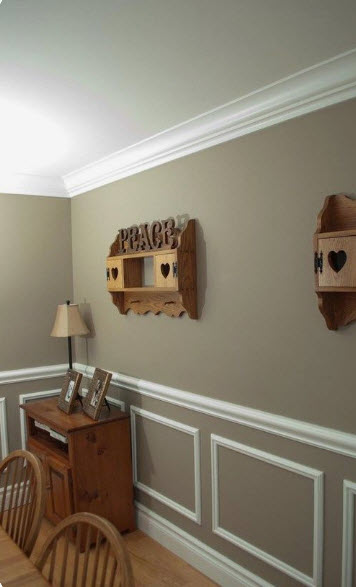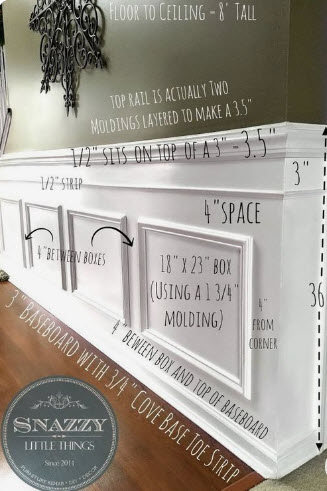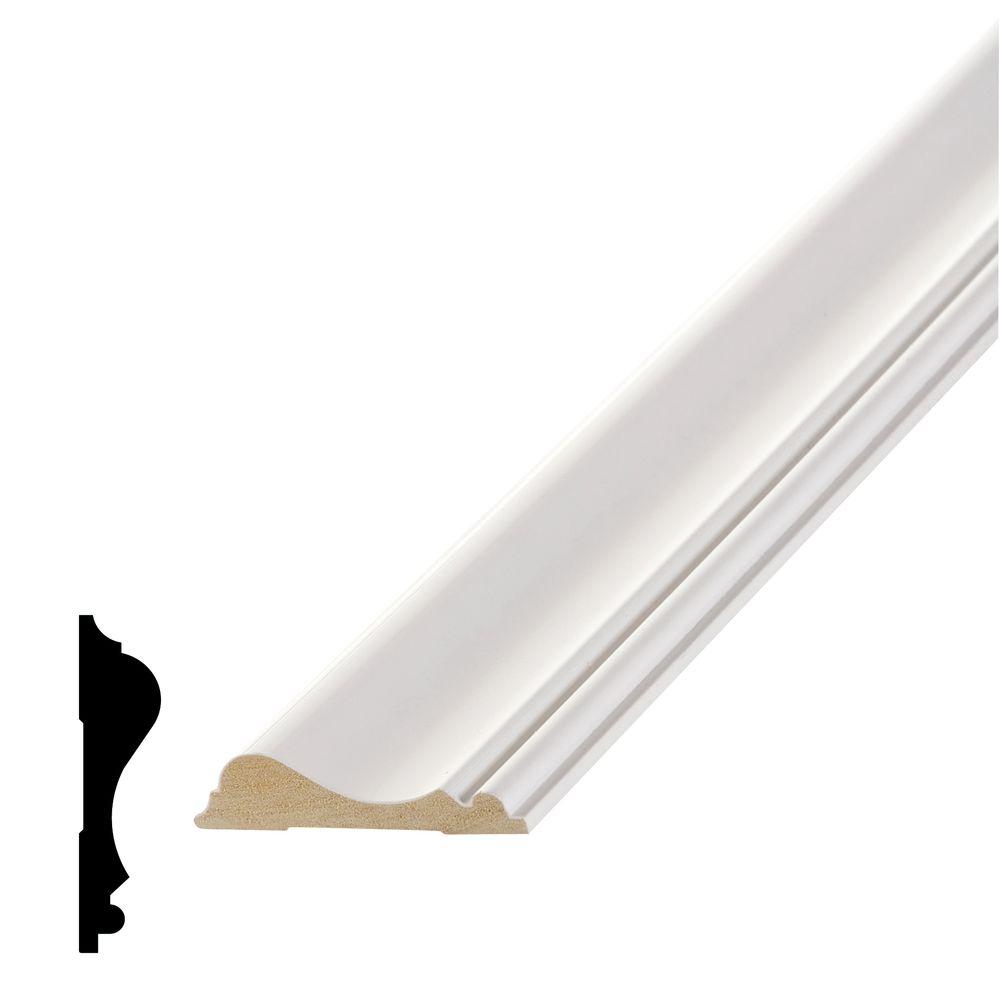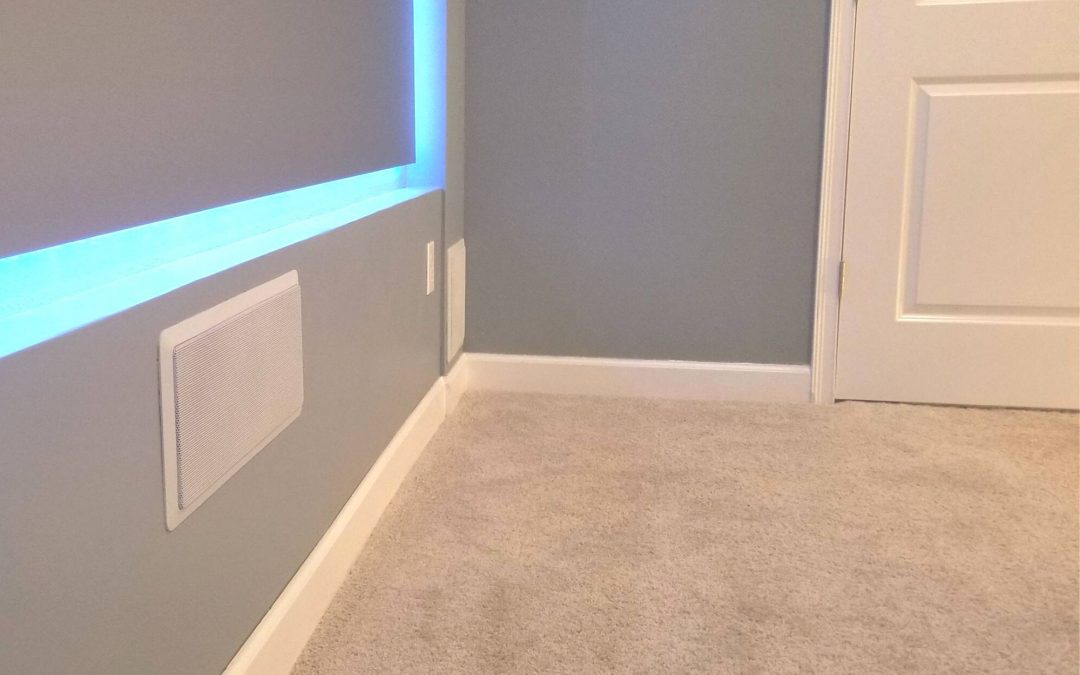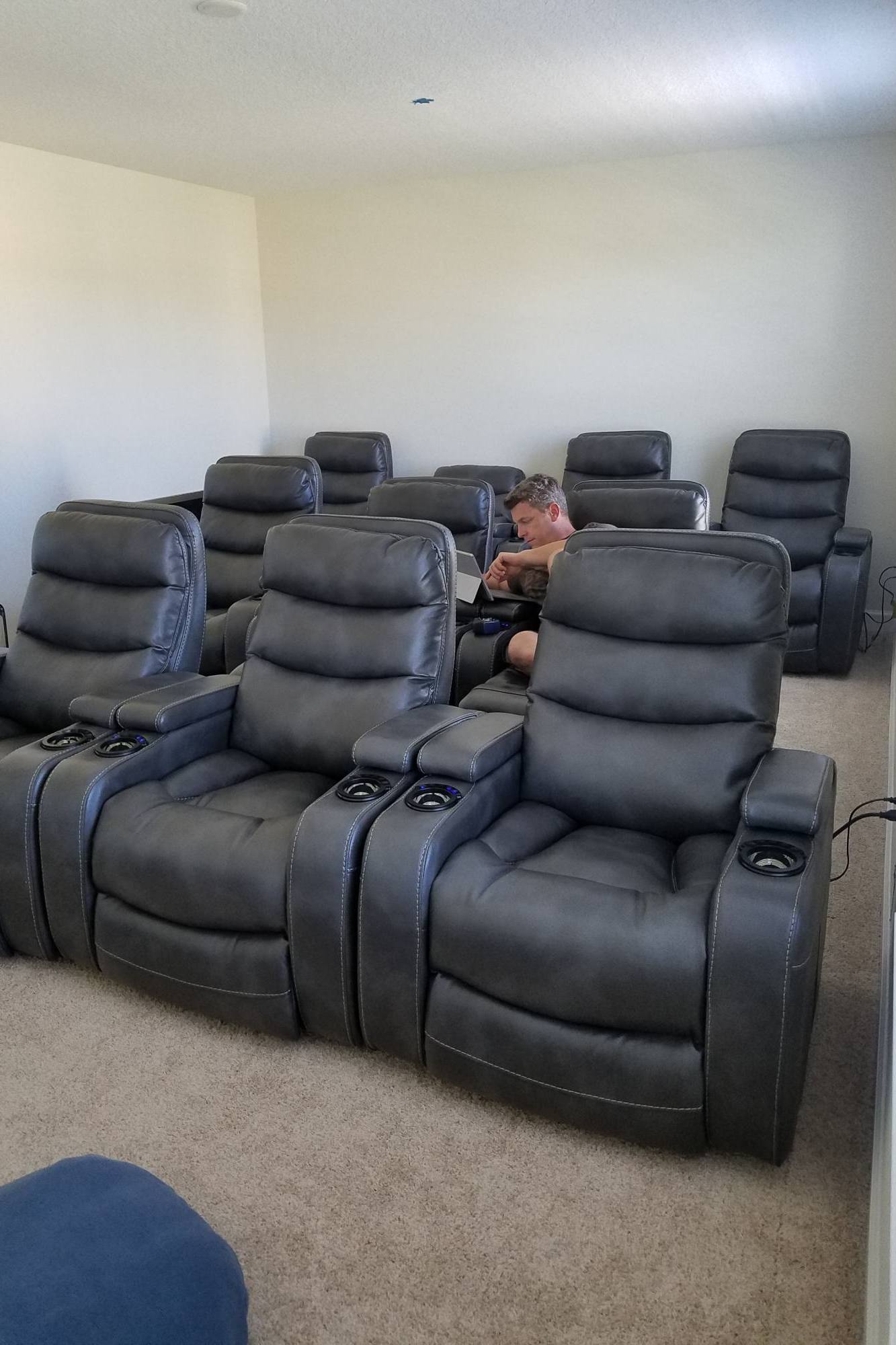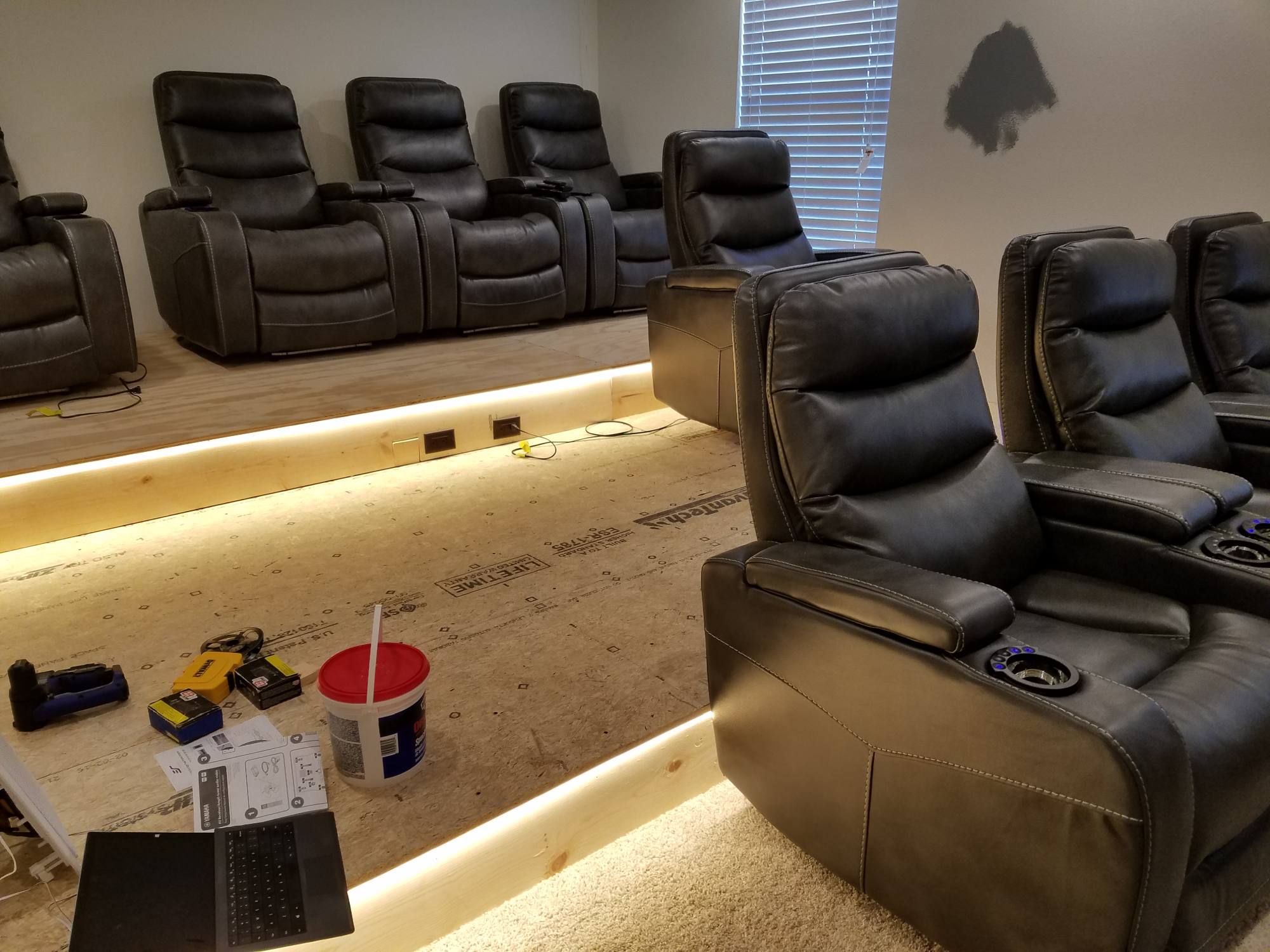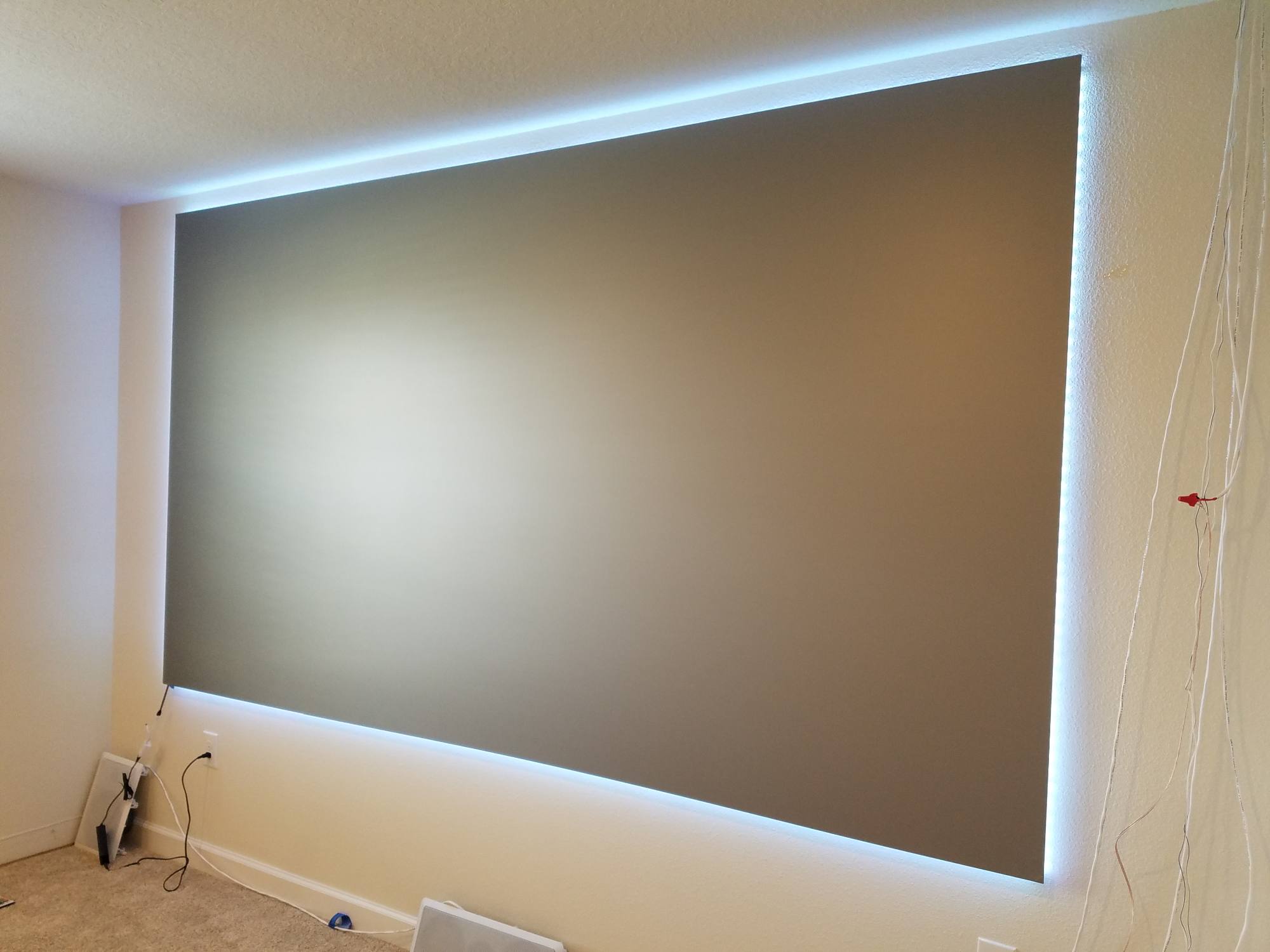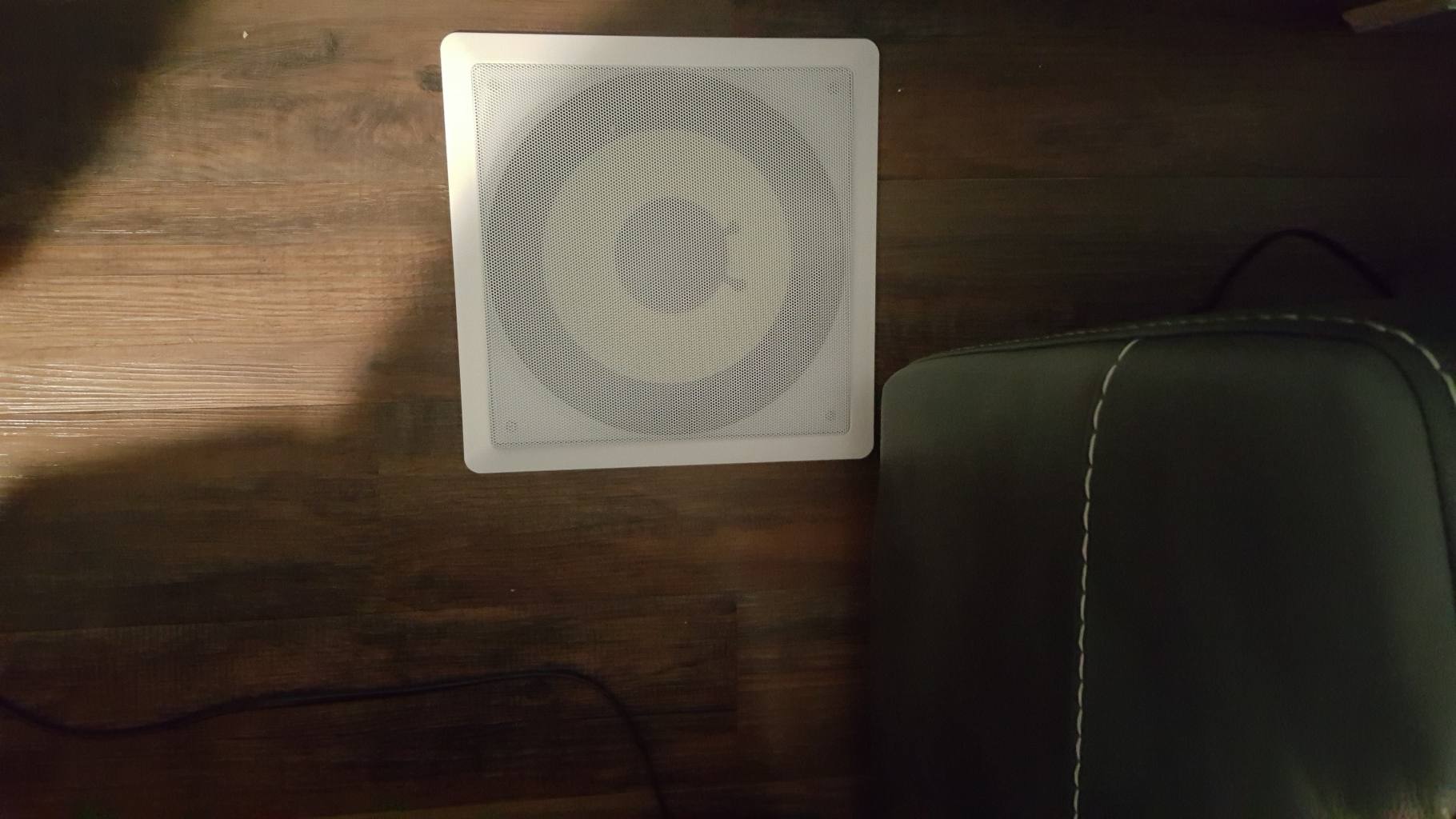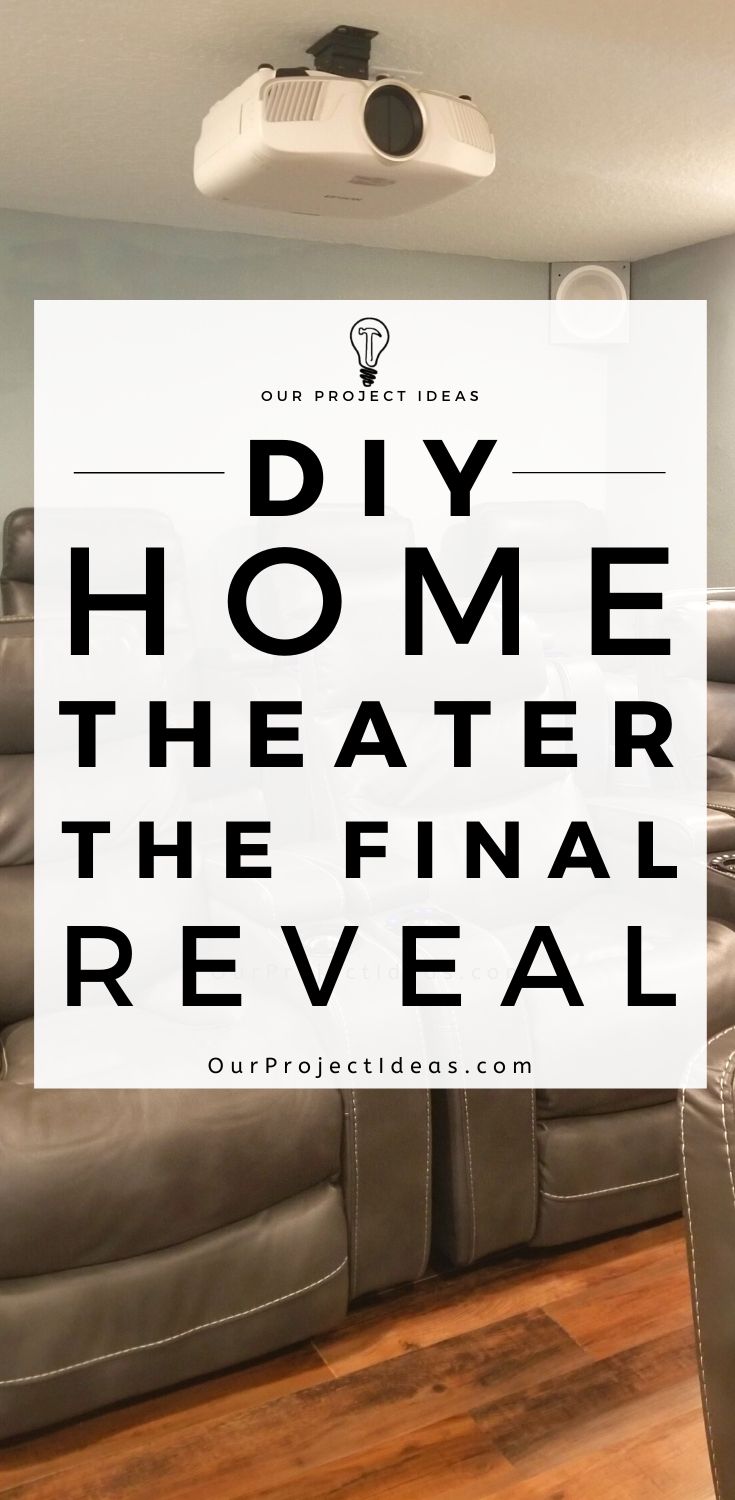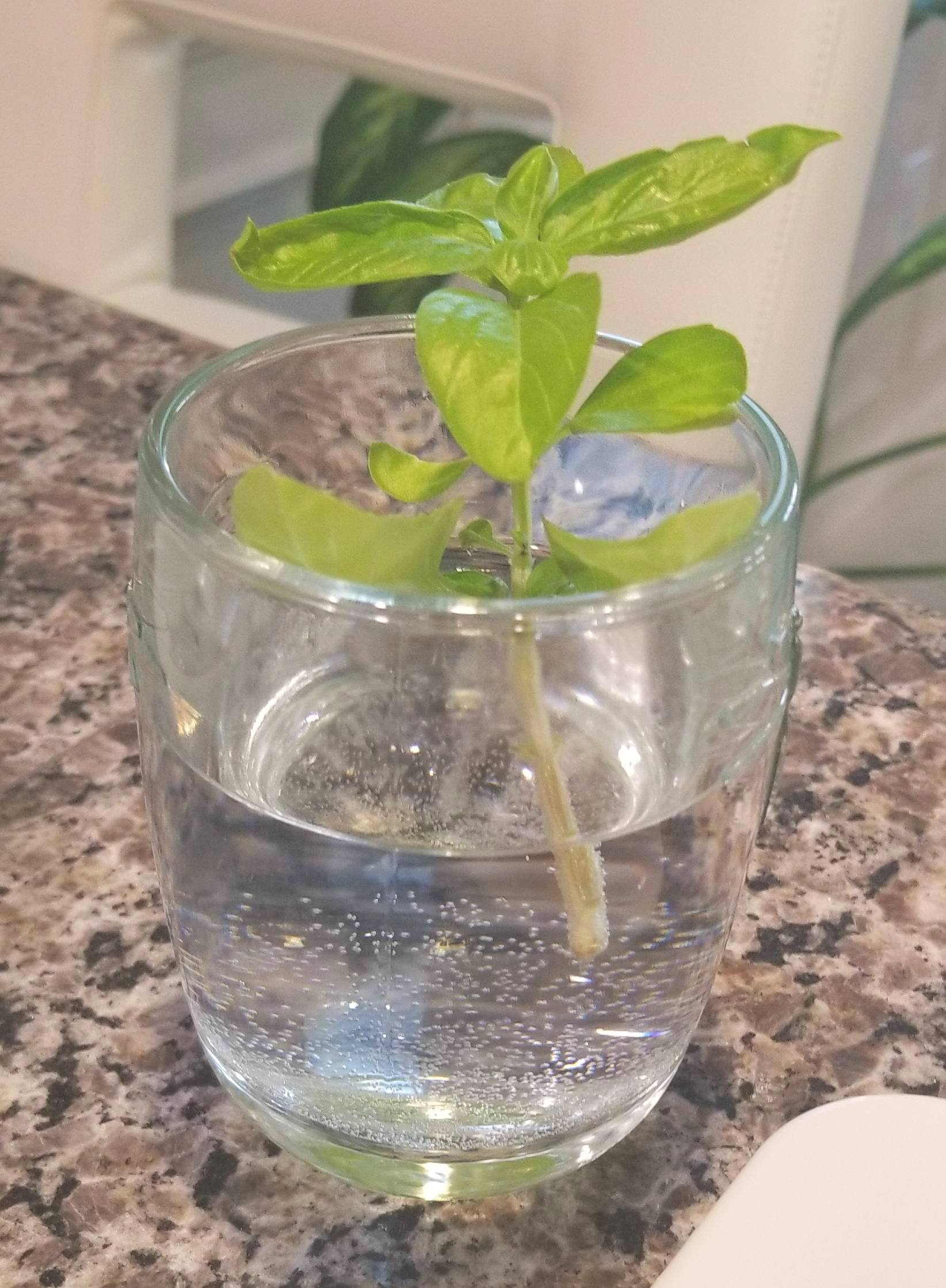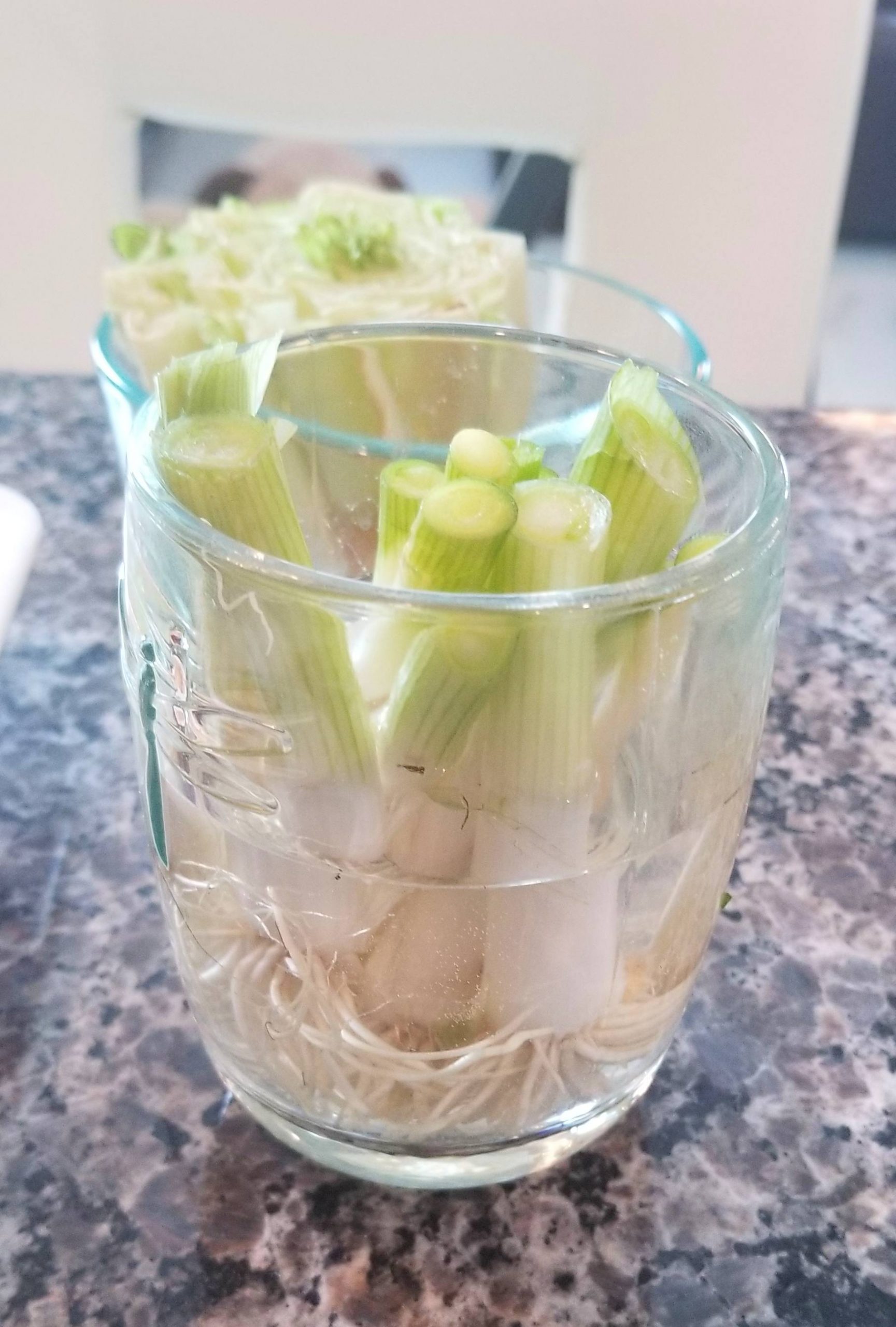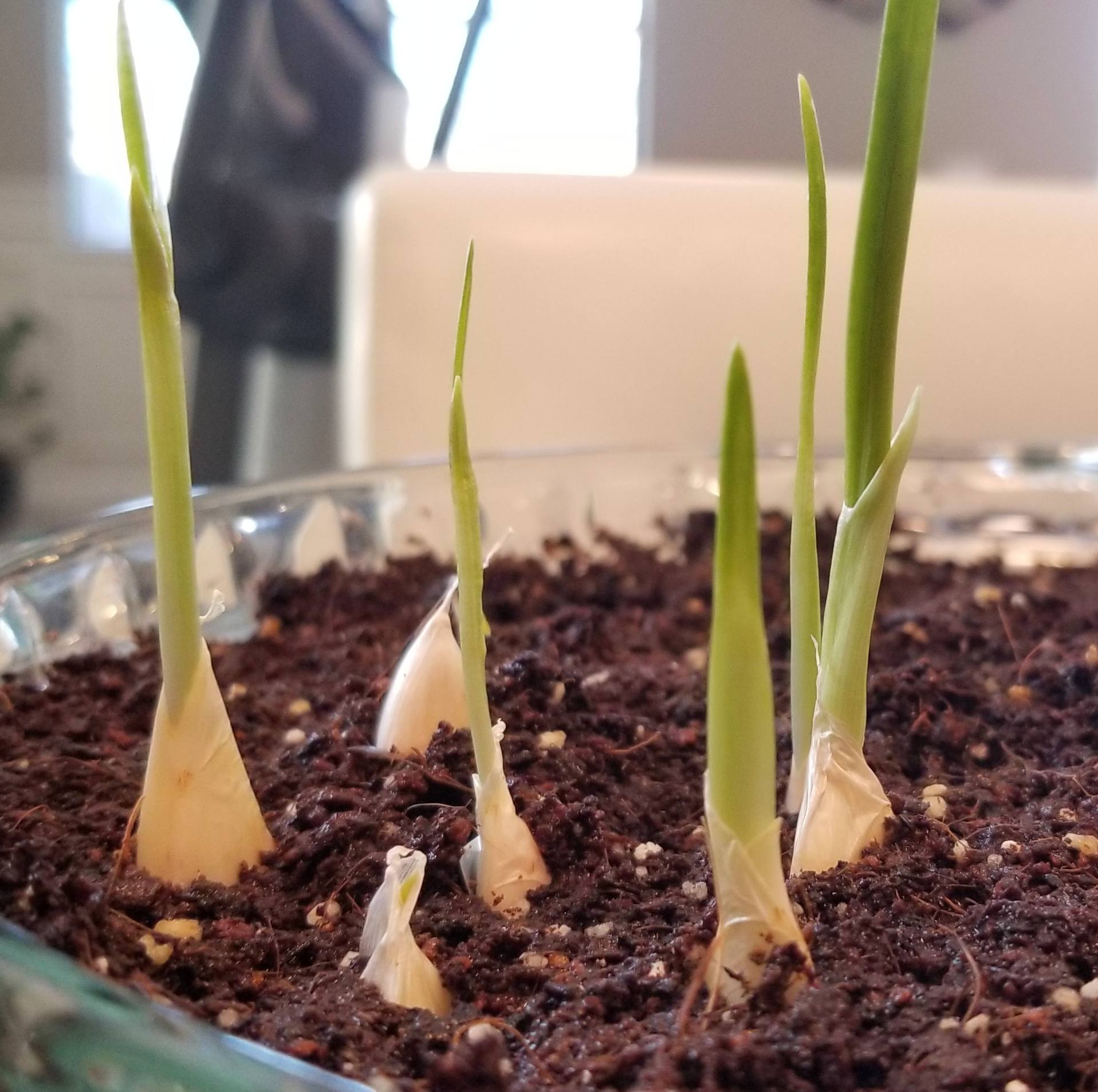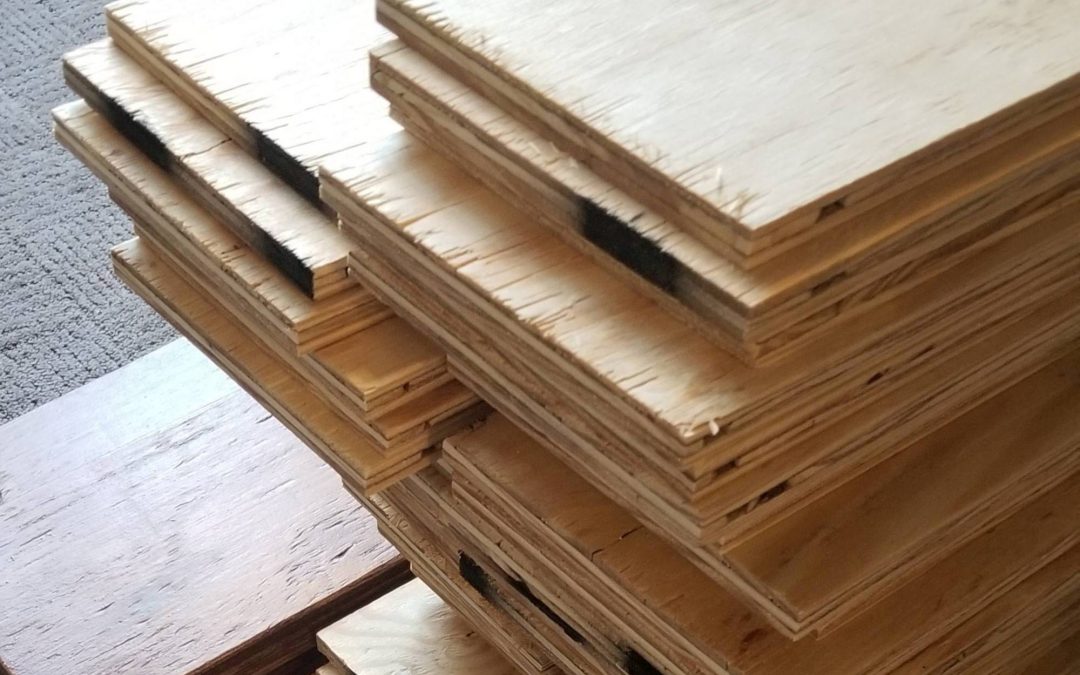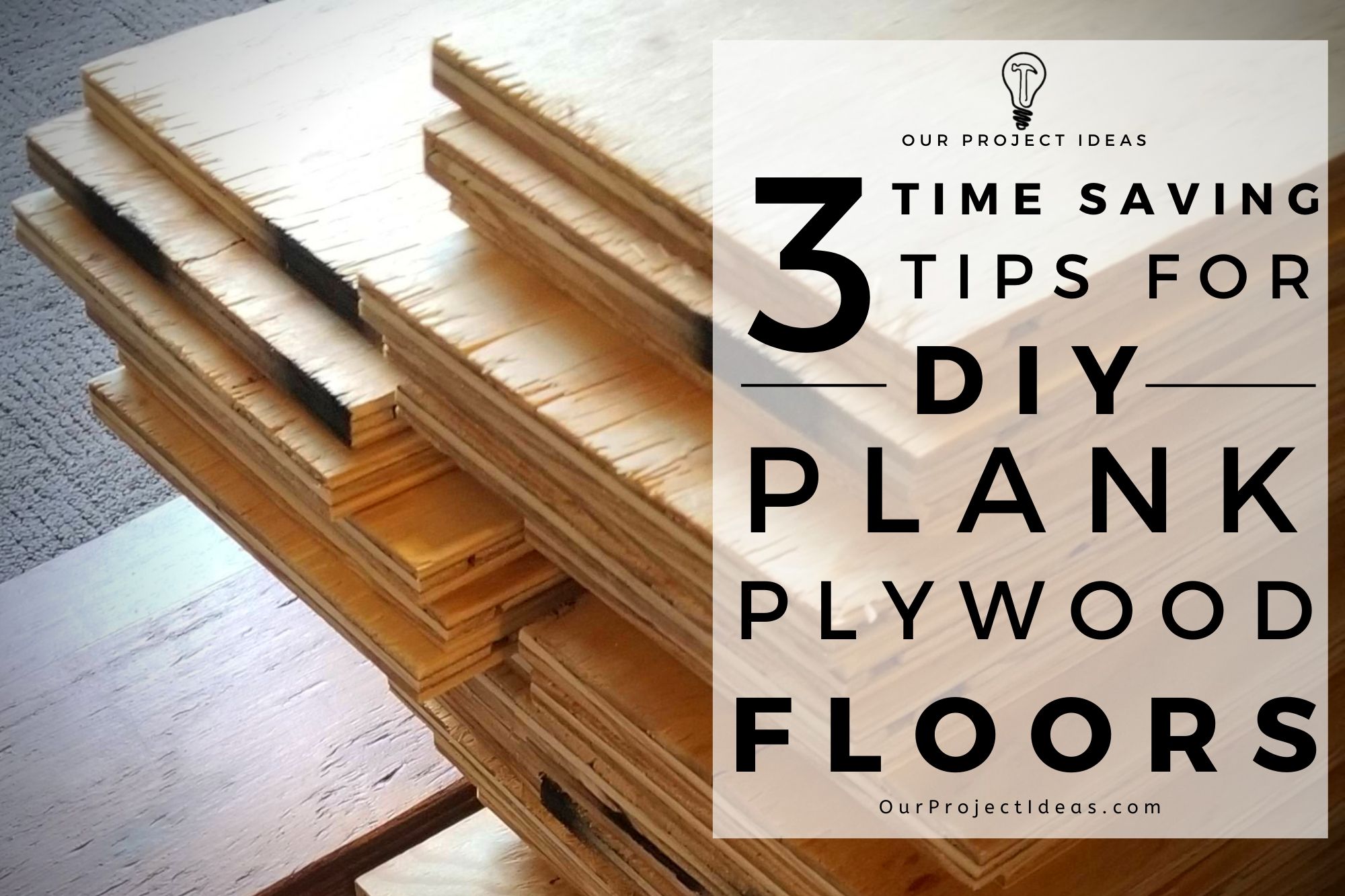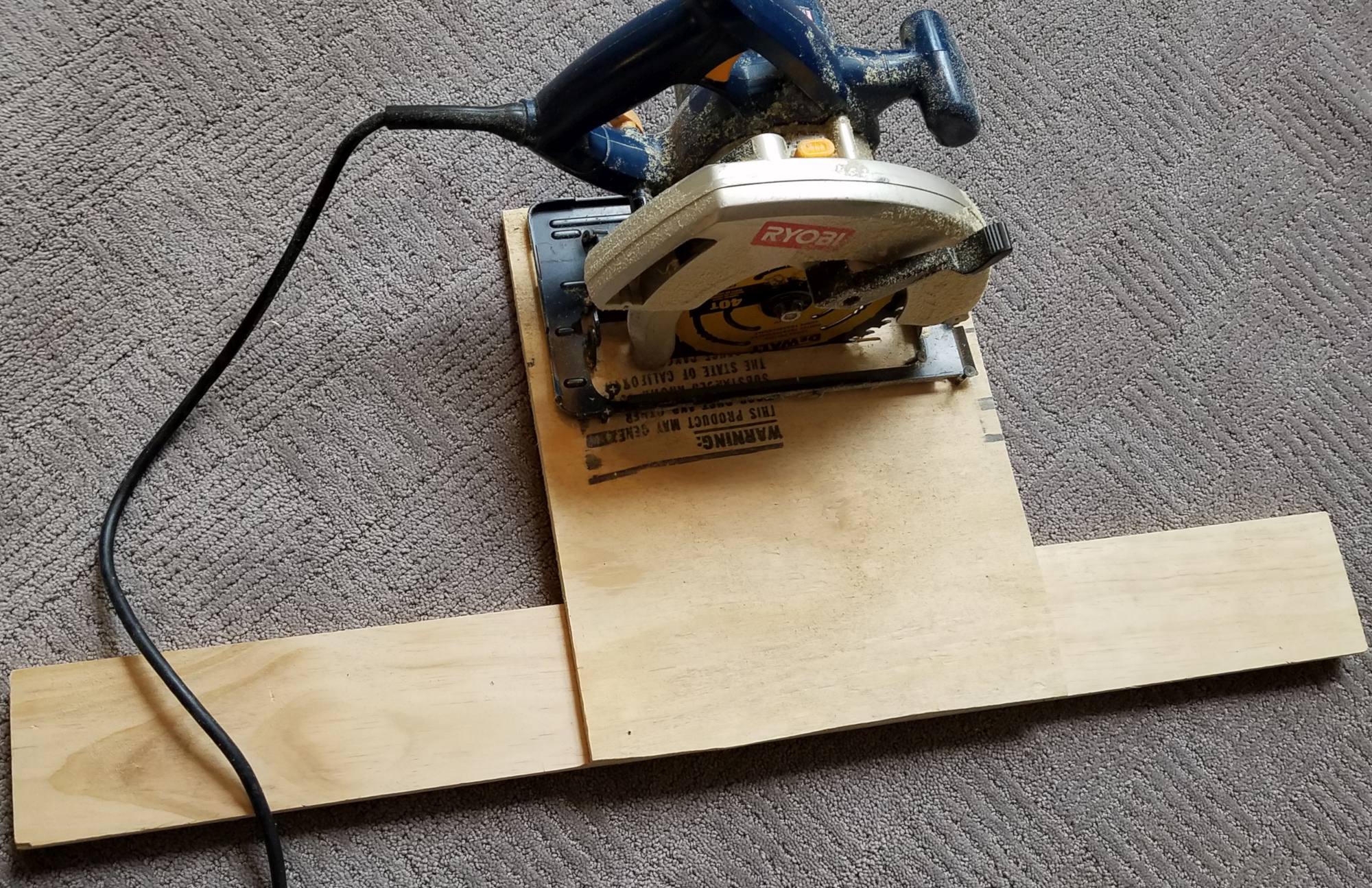
DIY Wainscoting – Teil 1 – Design und Layout

Wenn Sie auf Pinterest nach Täfelungen suchen, finden Sie alle möglichen Stile und Versionen von Täfelungen, von supereinfach bis unglaublich kunstvoll.
Ich wollte ein Täfelungsdesign, das schick aussieht, aber nicht übertrieben wirkt, und ich wollte nicht, dass es zu schwierig zu installieren ist.
Ich denke, dass die Wahl, die wir getroffen haben, genau das bewirkt hat, Es hat eine Menge Stil und Charakter hinzugefügt und sieht großartig aus. Und es hat nicht viel Zeit gekostet.
Ich habe zuerst die Täfelung im Erdgeschoss gemacht, Dann, etwa ein Jahr später, beschloss ich, auch die Täfelung im Obergeschoss durchzuführen. Wenn ich die Zeit zwischen dem Ober- und dem Untergeschoss addiere, hat es für beide wahrscheinlich insgesamt etwa 2 Wochen gedauert… Aber bedenken Sie, dass es ziemlich große Räume sind.
Das Projekt wird in eine Reihe von Beiträgen unterteilt.
In diesem Beitrag konzentrieren wir uns auf das Design, das wir ausgewählt haben, und auf die Gründe, warum wir es ausgewählt haben, wie wir auf unsere Täfelungsgrößen gekommen sind, und wie man Täfelungen misst.
In zukünftigen Beiträgen werden wir uns dann mit dem Schneiden der Täfelung befassen, Ich werde die Täfelung anbringen und ich denke, ich werde noch eine weitere mit der Täfelung in der Treppe machen, (Spoiler Alarm, Es gibt noch mehr Mathe, lol).
Egal welchen Stil du wählst, Hier finden Sie Tipps, die Ihre Installation reibungsloser gestalten.
Ich denke, das Geheimnis bei der Installation von Täfelungen liegt in der Verwendung von Schablonen und Abstandshaltern. Da die meisten Teile der Täfelung die gleiche Größe haben, können Sie Schablonen anfertigen, um sie schneller zuzuschneiden, und Abstandshalter ermöglichen einen gleichmäßigen Abstand, ohne dass jeder Raum ausgemessen werden muss.
Die Verwendung von Schablonen und Abstandshaltern bei Ihrer DIY-Vertäfelung hat einen großen Einfluss auf die Länge Ihrer Installationszeit.
Bekanntgabe: Einige der Links unten sind Affiliate-Links. Wenn Sie sich entscheiden, eines dieser Produkte zu kaufen, Wir verdienen eine kleine Provision ohne zusätzliche Kosten für Sie. Wir empfehlen diese Produkte nur, weil wir haben Erfahrung mit ihnen und sie für unsere eigenen Projekte. Als Amazon Associates, Wir verdienen mit qualifizierten Einkäufen.
Entscheidung für einen Täfelungsstil
Wir haben uns viele Pinterest-Pins mit Täfelungen angeschaut, um eines zu finden, das zu dem Stil passt, den wir uns vorgestellt haben.
Ehrlich, wenn Sie nicht wissen, welchen Stil Sie möchten, Eine Suche auf Pinterest ist eine gute Möglichkeit, herauszufinden, welche Möglichkeiten Sie haben.
Natürlich, wenn Ihnen das gefällt Täfelung Layout und Formteile, die wir verwendet haben, Fühlen Sie sich frei, zu kopieren, was wir gemacht haben. 🙂
DIY-Täfelungsideen – Es gibt so viele Möglichkeiten
Es gibt so viele Ideen für Täfelungen, und sie sehen alle auf ihre Art großartig aus.
Werfen Sie einen Blick auf die verschiedenen Täfelungslayouts, die es auf Pinterest gibt, Machen Sie eine Suche und Sie werden unzählige Täfelungsdesigns finden. Wenn Sie nicht genau das finden, was Sie suchen, Überlegen Sie sich Ihren eigenen Täfelungsgeschmack, der eine Mischung aus einem oder zwei Designs ist, die Ihnen gefallen.
Hier sind ein paar Täfelungsdesigns das hat uns gefallen:
Der Pin, der uns inspiriert hat
Dies ist die Anstecknadel, die unsere Art des Täfelungsdesigns inspiriert hat. Uns gefiel das Aussehen und die zweite horizontale Leiste zwischen den Kästen oder Rahmen und der Stuhlleiste.
Das von uns verwendete Täfelungsdesign
Unser Täfelungsstil unterscheidet sich in einigen Punkten von der Nadel, die ihn inspiriert hat – aber ich denke, man kann die Ähnlichkeit erkennen.
Die Unterschiede:
- Verwendet ein kräftigeres zweites horizontales Formteil (Es ist dasselbe, das wir für die Täfelungsrahmen verwendet haben)
- Der Stuhl ist höher geformt (so dass es mit der Küchentheke unten und der halben Wand oben ausgerichtet war)
- Verwenden Sie stehende Rechtecke anstelle der liegenden Quadrate oder Rechtecke (was ziemlich häufig vorkommt)
- Unsere Räume um die Plätze herum sind 3 1/2 groß″ (die Breite eines 2er-Stücks×4. April)
Der Style
Wir haben uns viele Pinterest-Pins mit Täfelungen angeschaut, um eines zu finden, das zu dem Stil passt, den wir uns vorgestellt haben.
Uns gefielen, dass die Täfelungsrahmen eher rechteckig als quadratisch und eher höher als breiter waren.
Anfänglich, Wir wollten nur die Stuhlleiste oben auf den Rahmen anbringen, Aber nachdem wir es ausprobiert hatten, wurde uns klar, dass es eine zusätzliche Kleinigkeit brauchte, Deshalb haben wir zwischen der Stuhlleiste und den Rahmen eine weitere horizontale Leiste eingefügt.
Das Wainscoting Höhe
Wie hoch soll Ihre Täfelung sein??
Ich bin auf einen Beitrag gestoßen, in dem die Höhe der Täfelung ausführlich besprochen wird. Ihr Tipp war, die Drittelregel anzuwenden, Das bedeutet, dass die Wandtäfelung nicht höher als ein Drittel der Wandhöhe sein sollte.
Hier ist der Link wenn Sie mehr erfahren möchten.
Ich bin erst auf den Artikel gestoßen, als ich angefangen habe, diesen Beitrag zu schreiben, aber selbst wenn ich es schon einmal gesehen hätte, Ich hätte mich wahrscheinlich immer noch nicht an die Drittelregel gehalten. Denn wir wollten, dass die Höhe der Täfelung für jede Etage mit etwas anderem im Raum übereinstimmt – und das entsprach nicht einem Drittel der Wandhöhe.
Im ersten Stock war es die Oberseite der Küchentheke und im zweiten Stock war es die halbe Wand im Dachgeschoss.
Wenn Sie versuchen, eine Höhe zu finden, die Sie verwenden können, Versuchen Sie die Drittelregel, oder richten Sie es mit etwas anderem im Raum aus, Oder wenn sich im Raum nichts befindet, an dem die Täfelung ausgerichtet werden soll, können Sie die Maße, die wir als Ausgangspunkt verwendet haben, verwenden und nach Bedarf anpassen. 🙂
Die Höhe (vom Boden bis zur Oberseite der Stuhlleiste) im 1. Stock war 41″ und die Höhe im 2. Stock betrug 41 1/2″.
Ermitteln Sie die Rahmenbreite
Das war einer der größten Stolpersteine für mich, als ich dieses Projekt startete. Wie sollte ich dafür sorgen, dass alle Rahmen die gleiche Breite haben??
Da alle Wände unterschiedlich groß sind es schien unmöglich, sie alle gleich breit zu machen… und ... nun ja – es ist.
Am Ende habe ich herausgefunden, dass nicht jeder Täfelungsrahmen die gleiche Breite oder gar die gleiche Höhe haben muss. Tatsächlich ist es unmöglich, dass sie die gleiche Breite haben, da die Wandgrößen alle unterschiedlich sein werden.
Ich wollte nicht, dass die Rahmen quadratisch sind, wenn ich das vermeiden konnte, und basierend auf der Höhe der Täfelung habe ich Rahmen mit einer Breite von etwa 18 Zoll angestrebt.
Ich habe ein Werkzeug erstellt, mit dem Sie die Breite der Bilderrahmen berechnen können, Schauen Sie es sich an, indem Sie auf die Schaltfläche unten klicken.
Die Täfelungsmaße
Ich wollte das betonen. Die Abmessungen der Täfelung sind für jede Wand unterschiedlich. Die Abmessungen des Täfelungsrahmens an derselben Wand bleiben gleich, Aber sie werden unterschiedlich sein, wenn sie an einer neuen Mauer ist, da wahrscheinlich die neue Mauer eine andere Breite sein wird.
Denn auch wenn die Rahmenhöhe gleich bleibt, Die Breite des Täfelungsrahmens ändert sich je nach Wandbreite und Anzahl der Täfelungsrahmen.
Der Raum um die Rahmen
Der Abstand zwischen den Rahmen ist DAS, was einheitlich sein muss. Halten Sie den Abstand gleich und Ihr Gehirn wird denken, dass alle Bildrahmen die gleiche Größe haben.
Solange der Abstand um die Rahmen herum gleich ist, wird alles fließen.
Für uns, Wir haben einen Abstand von 3 1/2 gewählt″ rund um jeden Rahmen, Auf diese Weise könnten wir 2er-Stücke verwenden×4 als Abstandshalter. 😉
Das Wainscoting Von uns verwendete Maße
Das Bild zeigt alle von uns verwendeten Täfelungsmaße.
Denn jede Wand hat eine andere Breite, Die Die Wandtäfelungsmaße müssen für jede Wand unterschiedlich sein.
Alle Dimensionen von Die Täfelungsrahmen an derselben Wand sind gleich.
Alle Maße im Bild bleiben für jede Wand im Raum gleich, bis auf die Wainscoting -Rahmenbreite (16 5/8″ im Bild) Dies hängt von der Breite der Wand und der Anzahl der an der Wand verwendeten Rahmen ab.
Wir wussten, dass die Gesamthöhe der Täfelung 41 1/2 betrug″ (um sie an die Höhe der halben Wand im Raum anzupassen) Also haben wir von dieser Messung aus rückwärts gearbeitet.
Wir haben die Oberseite der Stuhlleiste bei 41 1/2 platziert″ und platzierten die kleinere horizontale Leiste darunter, um zu sehen, welcher Abstand zwischen ihr und der Stuhlleiste für uns funktionierte. Wir haben uns 3 ausgedacht″ (die Dicke unseres Niveaus).
Da ich auch wusste, dass ich 2 x 4 Stücke als Abstandshalter verwenden würde, konnte ich jetzt die Höhe der Täfelungsrahmen ermitteln.
So haben wir die Höhe der Täfelungsrahmen ermittelt:
| Die Gesamthöhe der Täfelung | 41 1/2″ |
| Minus Die Dicke des Stuhlformteils | – 2 3/4″ |
| Abzüglich des Platzes unter der Stuhlleiste | – 3″ |
| Abzüglich der zweiten horizontalen Formteildicke | – 1 1/4″ |
| Minus Der Abstand über dem Rahmen | – 3 1/2″ |
| Minus Der Abstand unter dem Rahmen | – 3 1/2″ |
| Minus Die Dicke der Fußleiste | – 4 1/2″ |
| Entspricht der Wainscot Rahmen Höhe | = 23″ |
Ermitteln der Breite der Täfelungsrahmen
OK, Du hast den Stil herausgefunden, Formen, Höhe, Abstand und die Farben – Jetzt ist es Zeit für etwas Mathe!
Dieser Teil mag ein wenig einschüchternd wirken, aber glauben Sie mir, Es ist viel einfacher, als es scheint.
Wie jeder andere Aspekt dieses Projekts, Es gibt wahrscheinlich eine Million andere Möglichkeiten, dies herauszufinden, aber hier ist ein Beispiel dafür, wie ich es gemessen habe.
Nehmen wir als Beispiel die Wand im Bild, Die Wand war 124 1/2 groß″ und am Ende habe ich 6 Täfelungsrahmen verwendet.
Aktualisieren: Ich habe beschlossen, einen einfachen Täfelungsrechner zu erstellen, bei dem Sie die Wandbreite angeben, Die Breite der Abstände zwischen den Rahmen und die Anzahl der Rahmen geben Ihnen die Breite jedes Täfelungsrahmens.
Klicken Sie auf die Schaltfläche unten und Sie müssen die Mathematik nicht ausführen.
Berechnung für die 6 Frames Gezeigt
Zuerst, Ich subtrahiere den linken Abstand von der Summe, was für mich 3 1/2 ist″ oder 3,5″, Werfen Sie einen Blick auf das Bild, um es visueller zu machen.
Das gibt mir 121″, Jetzt dividiere 121″ nach der Anzahl der Frames, die Ihrer Meinung nach passen würden. Im abgebildeten Beispiel habe ich 6 verwendet.
121″ / 6 = 20,16″
Jeder Frame + sein Abstand auf der rechten Seite würden also 20,16 betragen″ in der Breite (Die roten Pfeile).
Die Rahmengröße wäre also 20,16 minus dem Abstand rechts.
Die Rahmengröße wäre nun 20,16 – 3.5″ = 16,6″ (Die blauen Pfeile)
Da ich eine rechteckige Form wollte, 16.6″ gut gearbeitet. Grundsätzlich gilt, Ich versuche die gleiche Formel mit einem zusätzlichen Rahmen oder minus einem Rahmen, und finden Sie heraus, welches am besten aussieht.
Nehmen wir an, wir haben mit 5 gerechnet Rahmen
Wenn ich 5 versucht hätte, es wäre 121″ / 5 = 24,2 Das bedeutet, dass jeder Frame + der Abstand rechts davon 24,2 betragen würde″. Die Rahmengröße wäre also 24,2″ – 3.5″ (die Abstandsgröße) das wäre 20,7″
Man sollte bedenken, dass es bei all dem kein Richtig oder Falsch gibt. Ich wollte, dass meine Rahmen eher rechteckig als quadratisch aussehen und eine Breite von 20,7 haben″ würde ziemlich nahe an der Höhe von 23 liegen″ Also habe ich mich statt für 5 Frames für 6 entschieden.
Dezimalzahlen in Brüche umwandeln
Jetzt wissen Sie also, dass die Frames 16,6 sein sollten″… Wie zum Teufel findet man das mit einem Maßband heraus??!
Mit einem Taschenrechner war es definitiv einfacher, die Zahlen herauszufinden, aber ich hatte ein Problem damit, die Dezimalzahl vom Taschenrechner wieder in einen Bruch umzuwandeln, den ich mit einem Maßband verwenden konnte.
Die Antwort war damals ein Widget, auf das ich gestoßen bin und das Dezimalzahlen in Brüche umwandelt, die mit einem Maßband verwendet werden können. Es war nicht 100 %, weil der Bruchteil, den ich erhielt, manchmal 231/356 betrug… was nicht hilft. lol
Jetzt, Ich habe einen Täfelungsrechner erstellt. Geben Sie die Maße in Bruchteilen ein, die Sie auf einem Maßband finden würden, und es ermittelt den Täfelungsrahmen und gibt Ihnen die Breite in Bruchteilen an, die Sie auf dem Maßband verwenden können. Keine Mathematik mehr und keine 231/356 mehr! lol
So behandeln Sie Fenster mit Wainscoting
Daran habe ich später gedacht. Wenn das Fenster unter die Höhe Ihrer Täfelung reicht, ist es am besten, die Wand abschnittsweise zu messen, mit dem Raum unter dem Fenster als eigenem Abschnitt.
Ich habe einige Bilder von Täfelungen gesehen, auf denen sie verwendet werden “L” geformte Rahmen, die sich an das Fenster anpassen… Ich glaube nicht, dass es so toll aussieht.
Ich denke, es sieht zusammengesetzter aus, wenn die Rahmen unter dem Fenster unterschiedliche Breiten und Höhen haben – Solange der Abstand um die Rahmen herum derselbe ist wie der Rest der Wand, passt alles zusammen.
Ich hatte nur ein Fenster, das mein Layout für die Ketten auswirkte, Und zum Glück hat es die Dinge nicht zu sehr beeinflusst. Sobald ich es tat, wurde mir klar.
Schauen Sie sich das Bild unten an, Das ist das Fenster, über das ich spreche. Es sieht nicht schlecht aus, Aber es war mehr als alles andere Glück. Ich ging von rechts nach links, als ich meine Wainscoting installierte, Am Fenster wurde erkannt, dass ich unter dem Fenster etwas anderes machen muss (Beachten Sie, dass die beiden Kisten unter dem Fenster nicht so breit sind wie die neben ihnen), übersprungen es später und nahm meine Bildrahmen auf der anderen Seite des Fensters wieder auf.
Stattdessen, Ich hätte es besser gewesen wären, wenn ich die Bildrahmen unter dem Fenster mit der Fensterbreite ausrichten und die Leerzeichen auf jeder Seite des Fensters als separate Wände behandelt und für jede Seite separat berechnet hätten.
Ich habe das Bild bearbeitet, um zu zeigen, wie es ausgesehen hätte, wenn ich die Frames unter der Fenster mit den Kanten des Fensters ausgerichtet hätte. Entschuldigen Sie die grobe Bearbeitung, Aber ich denke, es gibt eine Vorstellung davon, wie es besser ausgesehen hätte.
Wieder, Das Fenster hat es zum Glück nicht zu sehr für mich zusammengeschlagen, Aber ich kann sehen, wo es wirklich hässlich werden könnte, wenn Sie das Fenster vorher nicht planen.
Das von uns verwendete Formteil
Für die Täfelung haben wir zwei verschiedene Formteile verwendet, eine für die Stuhlleiste und die andere für die Rahmen und die horizontale Leiste zwischen Stuhlleiste und Rahmen.
Wir haben beide bei Home Depot gekauft. Hier sind sie, Sie können auf das Bild klicken, wenn Sie das gleiche Formteil erhalten möchten.
Die Stuhlformung (Top-Formteil)
Das ist die Stuhlleiste. Es gab eine Polyversion dieser Leiste, die viel billiger ist, aber die Merkmale waren etwas übertriebener und uns gefiel das Aussehen der Holzversion besser.
Unsere Farben
Bei den Wandfarben haben wir uns für Greige-Farben entschieden (eine Mischung aus Grau und Beige).
Auf vielen Täfelungsbildern, auf die wir gestoßen sind, waren die Täfelungsrahmen weiß auf einer andersfarbigen Wand. Dadurch tritt der Täfelungsrahmen stärker hervor, Stattdessen haben wir uns dafür entschieden, die Rahmen in der gleichen Farbe wie die Wand zu streichen.
Wenn Sie die Täfelung in der gleichen Farbe wie die Wand streichen, wirkt sie wie ein Einbaustück, was uns gefallen hat.
Wenn Sie die gleichen Farben verwenden möchten, finden Sie hier die beiden Farben, die wir verwendet haben:
Farbe der unteren Farbe
Sherwin Williams
Ästhetisches Weiß (SW7035)
Vitrine
Innensatin
Top-Lackfarbe
Sherwin Williams
Erneut Grau (SW7030)
Vitrine
Innere Eierschale
Das ist es für das Wainingcoting -Design und das Layout
Das ist es, um die DIY mit dem Entwerfen und Auslegen Ihrer Wainscoting -DIY. Now that you figured out all the nitty gritty for your wainscoting it’s time to start cutting some molding! I’ll cover that in the next post!
Click on the button below to keep reading:
Some Pictures Of The Finished Wainscoting
Here’s some more pics of the wainscoting. I’m thinking of doing a post on the wainscoting in the stairs since that was a bit trickier. I haven’t used math like that since High school! lol
Lass mich wissen was du denkst, dort etwas hätten Sie getan haben unterschiedliche?
Sagen Sie Ihre Meinung in den Kommentaren unten!
Viel Spaß mit diesem Beitrag? Pin es und teile es mit anderen!

